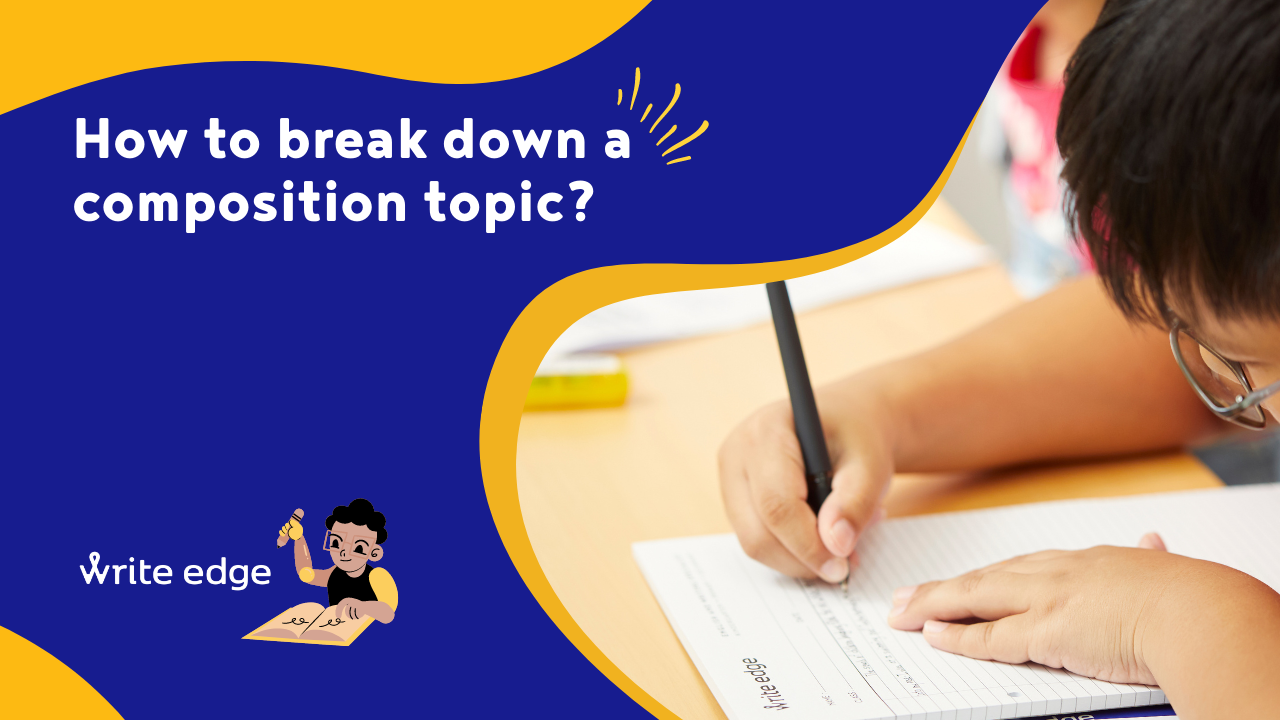2021 PSLE saw the novelty of students graduating under the new grading system. What remained unchanged was the Primary English composition format. A specific topic, 3 unlinked pictures and a story based on 1 or more of them – all of which were familiar ground to students. Here comes the time to step back and examine how to answer 2021’s PSLE composition topic, ‘A Promise’ by unwrapping it in layers.
Step 1: Analyse the title to have clarity on the theme of the story.
It is clear from the title, ‘A Promise’ that the story should be weaved around ‘ONE’ promise. Should the story revolve around a promise that is broken or fulfilled? What are the emotions attached to this theme? Maybe disappointment, pride or embarrassment…Once that is set, proceed to the next step.
Step 2: Plotting a plan for the story lays the groundwork.
Interestingly, it is one of the most important elements prior to actual story writing. In this, students brainstorm the logical flow of the story to ensure they are not in a fix about the direction of the story once they start writing.
- Is the story based on 1, 2 or all 3 pictures?
- Who are the main characters?
- Are you using First or Third person narrative?
- What is the setting?
- Are there any high points?
- How can you come up with a strong ending?
- Lastly, can you link the theme to the topic?
If students were to spend about 8 minutes drafting a plan for the above details, it will go a long way in bringing clarity to their writing. The logical sequence of the story becomes plausible only if students understand the story flow from start to finish.
Step 3: Starting on the story with an impressive first paragraph not only captures the readers’ attention but also encourages the reader to want to continue reading.
In short, it creates a narrative hook that captivates the reader. With a platter of story starters like speech, weather, character or setting description to choose from, picking an appropriate one as an introduction will launch the story in the right direction. It sets the tone of the story by giving a glimpse of the story setting and personality of the characters as well as their actions. Some likely introductions to the topic “A Promise” could include the description or thoughts of the protagonist.
Step 4: The origin of the conflict or problem takes the spotlight in Rising Action.
Basically, the events leading to the climax has to be detailed coherently. For example, in this PSLE composition topic, a possible origin of the problem may be as follows – the protagonist is engrossed in a task and loses track of time. By including 5-Senses descriptions, Show-Not-Tell phrases to describe the protagonist’s feelings and foreshadowing techniques, the Rising Action takes shape in the desired manner.
Step 5: Similar to a climax in a movie that keeps the audience in thrall with lots of action and drama, a story climax should also be packed with all the elements of writing to arrest the attention of the readers.
The high point should deal with the consequences of the conflict. It is highly likely that there will be a race against time to keep up the promise. Here is when possible emotions felt by the protagonist while facing the problem should be shown – panic or embarrassment. The consequent actions stemming from these emotions will form the gist of the climax. To describe these emotions, it is important to embrace facial expressions, actions, inner feelings, thoughts and speech. The protagonist’s dilemma thus portrays the inner turmoil and final decision.
Alongside this dilemma, the reaction of secondary characters must be featured in this segment – of indignation or disappointment. You can use similar skills, focusing more on their facial expressions, actions and speech.
Want to dress up the climax? Effective writing skills like vivid imagery, similes, personifications and vocabulary phrases creates a compelling plot. The climax, being the longest segment develops in-depth to connect with the readers.
Step 6: The consequences of climax, being the end of the conflict, is reflected using 5-Senses descriptions and Show-Not-Tell phrases
It is best not to solve the problem in a run-of-the-mill manner in order for the composition to stand out. Similarly, the story falls flat when sudden ‘coincidences’ wrap up the problem.
In this PSLE composition topic, consider these atypical suggestions to end the conflict – breaking the promise either unwittingly or deliberately. This adds a twist to the story which will make the composition distinctive from others.
Step 7: If you want to leave a lasting impression on the reader, then penning a wholesome conclusion is the trick.
Any powerful conclusion leaves the readers pondering about the protagonist’s character arc. This can take shape in the form of character growth and reflection. The protagonist makes sense of the entire experience, looking back on what happened and analysing its meaning and subsequent effect. In contrast, having an abrupt conclusion with just a ‘lesson learnt’ kills creativity and dampens the interest of the readers.
The conclusion for this particular PSLE composition topic would do well to include the protagonist’s views on the value of a promise and its impact on human relationships. How would the events that happened in this conflict influence the protagonist in the future?
Want to show that the story has stayed on course and not drifted from the given topic? Conclude with a clear Link to the topic.
At Write Edge, primary school students run through Primary English Model compositions to understand the nuances of effective writing skills. While applying these skills, they create stories that dare to be different and uniquely their own.
If you wish to find out more about the Creative Writing programmes at Write Edge, parents can reach out to us to arrange a trial class to find out more.


